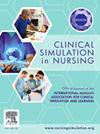Lesson learned from practice: Informing how to teach the use of simulated electronic medical records to nursing students
IF 3.4
3区 医学
Q1 NURSING
引用次数: 0
Abstract
Background
The rise of electronic medical records (EMRs) in healthcare necessitates their incorporation into nursing education. This study examines the implications of electronic medical records on nursing practice and education, highlighting the need for competency in technology use among student nurses. Registered nurses face challenges balancing EMRs use with patient care, often experiencing increased cognitive load and stress related to using this technology. With an understanding that the registered nurses are the largest users of EMRs, this research seeks to gain their perspectives about the practicalities of working with a workstation on wheels, and EMRs. Using insights from registered nurses, the study delves into these dynamics, offering insights into the practical realities of EMRs in nursing.
Methods
A qualitative approach was employed, gathering focus group data from eight clinical active registered nurses to understand their experiences with EMRs.
Results
Three key themes emerged: The integration of EMRs in practice; The balancing act between technology and patient-centred care and; Practical challenges such as time management and system usability. The findings highlight the necessity to equip nurses-and by extension, nursing students- with technological skills while ensuring EMRs integration does not compromise patient care.
Conclusion
Recommendations focus on enhancing nursing curricula with EMRs training and advocating for resources that support workflow efficiency and clinical decision making. This study illustrates the complexities of EMRs in nursing, emphasising the importance of digital competencies in nursing curricula to enhance student preparedness, optimise clinical workflows and improved healthcare outcomes.
求助全文
约1分钟内获得全文
求助全文
来源期刊

Clinical Simulation in Nursing
NURSING-
CiteScore
5.50
自引率
15.40%
发文量
107
期刊介绍:
Clinical Simulation in Nursing is an international, peer reviewed journal published online monthly. Clinical Simulation in Nursing is the official journal of the International Nursing Association for Clinical Simulation & Learning (INACSL) and reflects its mission to advance the science of healthcare simulation.
We will review and accept articles from other health provider disciplines, if they are determined to be of interest to our readership. The journal accepts manuscripts meeting one or more of the following criteria:
Research articles and literature reviews (e.g. systematic, scoping, umbrella, integrative, etc.) about simulation
Innovative teaching/learning strategies using simulation
Articles updating guidelines, regulations, and legislative policies that impact simulation
Leadership for simulation
Simulation operations
Clinical and academic uses of simulation.
 求助内容:
求助内容: 应助结果提醒方式:
应助结果提醒方式:


